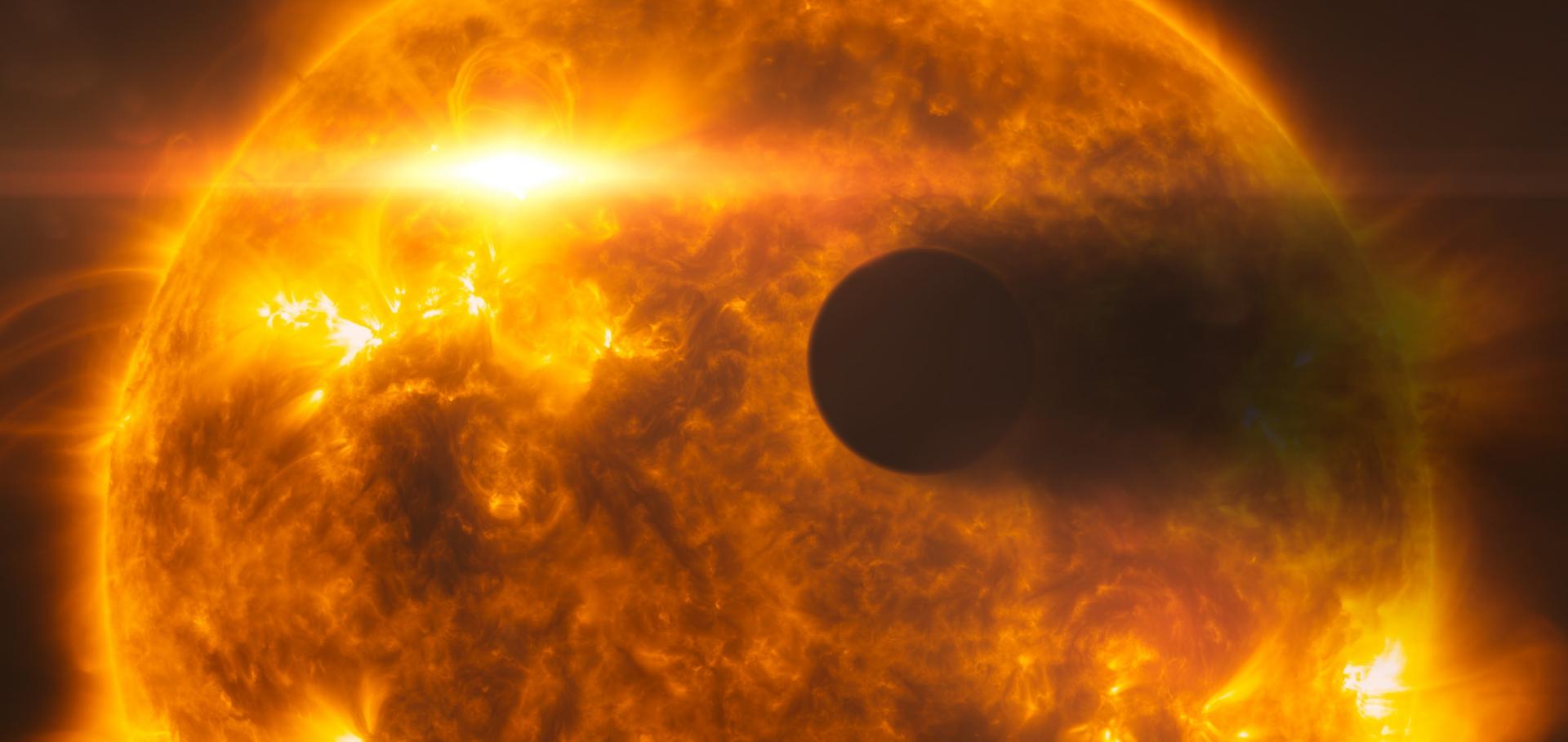TESS re-observes the young multi-planet system TOI-451: refined ephemeris and activity evolution
Research Notes of the American Astronomical Society American Astronomical Society 5:3 (2021) 51
Abstract:
We present a new analysis of the light curve of the young planet-hosting star TOI 451 in the light of new observations from TESS Cycle 3. Our joint analysis of the transits of all three planets, using all available TESS data, results in an improved ephemeris for TOI 451 b and TOI 451 c, which will help to plan follow-up observations. The updated mid-transit times are BJD–2,457,000 = ${1410.9896}_{-0.0029}^{+0.0032}$ , ${1411.7982}_{-0.0020}^{+0.0022}$, and ${1416.63407}_{-0.00100}^{+0.00096}$ for TOI 451 b, c, and d, respectively, and the periods are ${1.8587028}_{-10e-06}^{+08e-06}$, ${9.192453}_{-3.3e-05}^{+4.1e-05}$ , and ${16.364932}_{-3.5e-05}^{+3.6e-05}$ days. We also model the out-of-transit light curve using a Gaussian Process with a quasi-periodic kernel, and infer a change in the properties of the active regions on the surface of TOI 451 between TESS Cycles 1 and 3.TESS re-observes the young multi-planet system TOI-451: refined ephemeris and activity evolution
(2021)
A self-lensing binary massive black hole interpretation of quasi-periodic eruptions
Monthly Notices of the Royal Astronomical Society Oxford University Press 503:2 (2021) 1703-1716
Abstract:
Binary supermassive black hole (SMBH) systems result from galaxy mergers, and will eventually coalesce due to gravitational wave (GW) emission if the binary separation can be reduced to . 0.1 pc by other mechanisms. Here, we explore a gravitational self-lensing binary SMBH model for the sharp (duration ⇠ 1 hr), quasi-regular X-ray flares – dubbed quasiperiodic eruptions – recently observed from two low mass active galactic nuclei: GSN 069 and RX J1301.9+2747. In our model, the binary is observed ⇠edge-on, such that each SMBH gravitationally lenses light from the accretion disc surrounding the other SMBH twice per orbital period. The model can reproduce the flare spacings if the current eccentricity of RX J1301.9+2747 is n0 & 0.16, implying a merger within ⇠ 1000 yrs. However, we cannot reproduce the observed flare profiles with our current calculations. Model flares with the correct amplitude are ⇠ 2/5 the observed duration, and model flares with the correct duration are ⇠ 2/5 the observed amplitude. Our modelling yields three distinct behaviours of self-lensing binary systems that can be searched for in current and future X-ray and optical time-domain surveys: i) periodic lensing flares, ii) partial eclipses (caused by occultation of the background mini-disc by the foreground mini-disc), and iii) partial eclipses with a very sharp in-eclipse lensing flare. Discovery of such features would constitute very strong evidence for the presence of a supermassive binary, and monitoring of the flare spacings will provide a measurement of periastron precession.Planet Hunters TESS II: Findings from the first two years of TESS
Monthly Notices of the Royal Astronomical Society 501:4 (2021) 4669-4690
Abstract:
© 2021 2020 The Author(s) Published by Oxford University Press on behalf of the Royal Astronomical Society. We present the results from the first two years of the Planet Hunters TESS (PHT) citizen science project, which identifies planet candidates in the TESS (Transiting Exoplanet Survey Satellite) data by engaging members of the general public. Over 22 000 citizen scientists from around the world visually inspected the first 26 sectors of TESS data in order to help identify transit-like signals. We use a clustering algorithm to combine these classifications into a ranked list of events for each sector, the top 500 of which are then visually vetted by the science team. We assess the detection efficiency of this methodology by comparing our results to the list of TESS Objects of Interest (TOIs) and show that we recover 85 per cent of the TOIs with radii greater than 4 R and 51 per cent of those with radii between 3 and 4 R. Additionally, we present our 90 most promising planet candidates that had not previously been identified by other teams, 73 of which exhibit only a single-transit event in the TESS light curve, and outline our efforts to follow these candidates up using ground-based observatories. Finally, we present noteworthy stellar systems that were identified through the Planet Hunters TESS project.A self-lensing binary massive black hole interpretation of quasi-periodic eruptions
(2021)


